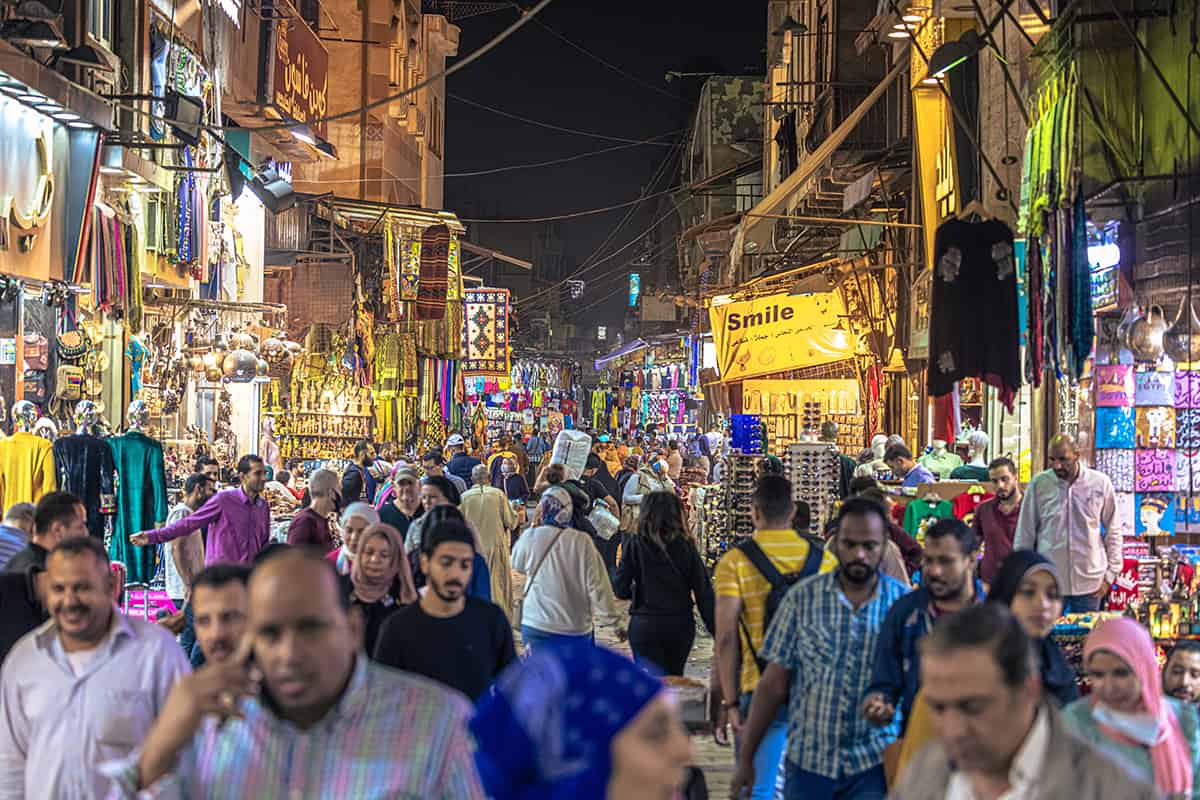Faced with an economy in near crisis, Egypt looks to bounce back.
With a growing crisis on its doorstep as Hamas and Israeli forces go to war in Gaza and its economy in tatters, Egypt is suffering a season of adversity. Prominent observers such as Timothy E. Kaldas, deputy director of the Tahrir Institute for Middle East Policy, argue that pulling the Nile nation out of its current trough might take a miracle. Egypt’s government and business leaders, however, are embracing an attitude of optimism and ambition.
In September, Egypt announced plans to start licensing a pipeline of green hydrogen projects whose total cost of investments is estimated at $83 billion. Egypt also intends to resume liquefied natural gas exports, which generated $8.4 billion in revenues in 2022 compared with $3.5 billion in 2021 and is advancing oil and gas exploration with new licensing rounds.
The government is also accelerating the expansion of the Suez Canal, a project that was necessitated by the grounding of the Ever-Given container ship in 2021. The waterway recorded its highest-ever annual revenues, at $9.4 billion, during the 2022-2023 fiscal year, up from $7 billion the previous year. With revenues projected at $8.8 billion for the current fiscal year, the canal that facilitates about 12% of global trade remains a key foreign exchange earner.
More critically, the government is relaxing its tight grip on the economy. Pushed by the International Monetary Fund (IMF) as a condition for a $3 billion bailout package, Egypt has lined up a total of 32 state companies, the majority of them under the control of the military, for privatization. In July, it announced the signing of deals worth $1.9 billion.
Reforms that reduce the government’s and the army’s footprints in the economy are key to reviving Egypt’s fortunes, says Riccardo Fabiani, project director, North Africa at Crisis Group: “These two have suffocated the economy and the private sector.”
For years, the military’s monopolistic role in certain sectors and the crippling of the private sector under President Abdel Fattah el-Sisi provoked little counterpressure; it took the Covid-19 pandemic and the Russia-Ukraine war to expose the quicksand the nation of 109.3 million was standing on.
Since then, some revelations have been nothing short of startling, topped by a massive accumulation of government debt to fund colossally expensive megaprojects whose contractors were largely military entities. Egypt’s external debt now stands at $165.3 billion, according to Central Bank of Egypt data. The IMF projects gross debt-to-GDP ratio to be 92.7% in 2023.
Servicing this debt is now a major headache. In the 2023-2024 fiscal-year draft budget, the government has earmarked 56.1% of revenues, amounting to $78.8 billion, for debt servicing. With its credit ratings downgraded by Moody’s from “B3” to “Caa1”, Egypt has little leeway if it should turn to international markets to refinance its debts.
“The problem is that the principal on many loans is coming due, and the markets are unwilling to lend at reasonable terms to allow refinancing,” notes Ishac Diwan, research director, Finance for Development, at the Paris School of Economics.
Apart from debt, Egypt’s dependence on Russia and Ukraine for commodity imports, particularly wheat, is also coming into the limelight. The US Department of Agriculture reported that in 2022-2023, the country imported 10.5 million tons of wheat, 57% of which came from Russia and 8.9% from Ukraine. Actual volume was the lowest in eight years, but a surge in prices boosted the wheat import bill to $4.4 billion last year from $2.7 billion in 2021.
The war, coupled with Egypt’s status as a net importer of petroleum products—which rose to $11.2 billion in 2022 from $6.7 billion the previous year—has thrown seemingly every aspect of the economy into crisis. Along with a biting dollar shortage, it has sown turmoil across the country’s macroeconomic fundamentals, spurring an unprecedented surge in inflation, throwing the local currency into free fall, squeezed foreign reserves, and widened the trade and budget deficits.
Official data shows annual inflation a steep rise, at 39.7% in August of this year compared to 15.3% and 6% in the same month in 2022 and 2021, respectively. Net international reserves have nosedived from a high of $45.4 billion in 2019 to a low of $34.9 billion currently.
The Egyptian pound remains in a state of paralysis despite a devaluation of about 50% against the dollar since February of last year. The IMF, as part of the conditions for the bailout, is demanding further devaluation to arrest the “bleed” of valuable reserves, a push the government remains reluctant to affect.
“Securing the IMF loan is crucial for increasing the confidence in the Egyptian economy,” argues Mohamed Hashish, managing partner at Soliman, Hashish & Partners, an Egyptian international corporate law firm. However, he adds, it is important not to ignore the impact of the tough conditions on ordinary Egyptians.

Ranked among the biggest remittance recipients in the world, Egypt is eager for a rebound. In 2022-2023, remittances from Egyptians working abroad plunged 30.8% to stand at $22.1 billion.
Already, the economic crisis is producing rising inequality and poverty, which some observers anticipate will be exacerbated by demographic trends. Unless the current birth rate is arrested, the population is forecast to reach 124 million by 2030. The government has acknowledged the pressure from a ballooning population, in the current circumstances, it is opting to trend cautiously; including considering limiting the number of births per family, use of family planning methods, etc.
The IMF has withheld disbursements under the bailout, mainly due to the government’s unwillingness to adhere to most of the conditions, pleading the danger of social unrest. For el-Sisi, who is seeking a new term in the December elections, slow-walking compliance, together with efforts to galvanize Egyptians through the National Dialogue initiative launched in May, is necessary if he is to remain in control.
“The National Dialogue is a cosmetic initiative whose main goal is to divide and soothe the opposition at a critical time,” says Fabiani; not a single reform proposed under the initiative has been implemented.
However, a new term for el-Sisi could provide the necessary window for applying tougher economic measures, such as a further devaluation, exchange rate liberalization, and accelerated privatization.
Egypt’s GDP: A Bright Spot
Some of these moves would be unpopular and risk irking the military, but some bright spots balance them out. In its latest update, the World Bank reversed Egypt’s real GDP growth estimate for this year to 4.3% from 4%.
That growth, coupled with the fact that Egypt remains attractive to foreign investors, particularly in sectors like oil and gas, renewable energy, maritime and logistics, tech and e-commerce, manufacturing, and tourism, suggests that reviving the private sector is a doable proposition.
Due partly to its strategic location in the eastern Mediterranean, Egypt remains attractive to foreign direct investment. In 2022, inflows more than doubled to $11 billion, according to the United Nations Conference on Trade and Development; impressively, greenfield projects more than doubled in number to 161 while international project finance deals rose in value by two-thirds to $24 billion.
Making the economy more dynamic and getting the private sector more involved are the cornerstone of economic revival, Diwan argues. Already, Egypt’s vibrant e-commerce industry, driven by a young and energetic population, is valued at $7.8 billion, and will hit $15.7 billion in 2028, according to Mordor Intelligence, a market intelligence and advisory firm.
Egypt is also benefiting from a revived tourism sector, another big foreign exchange earner. One of the world’s greatest open-air museums, the country saw tourism revenues surge 26.8% to hit a record $13.6 billion in the 2022-2023 fiscal year, according to the central bank. From 15 million visitors this year, the total is expected to reach 30 million by 2028.




